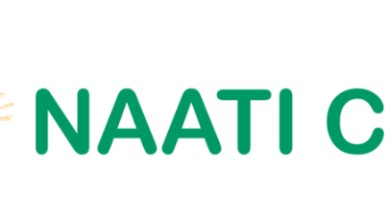Is Procedural Text Helpful In Dissertation Proposal Writing?

Dissertation proposal writing is a critical but vital task to be completed in academic life. A dissertation is the lengthiest piece of writing that extends up to ten to twenty thousand words. In contrast, a dissertation proposal aims to give the highlights of the dissertation and usually ranges between three to six thousand words. For making a good research/ dissertation proposal, one should use multiple approaches, such as summarising and listing techniques. Thus, this article aims to explain the usefulness of the procedural text in dissertation proposal writing in detail.
1. A brief introduction to Procedural text
Procedural text lists actions and steps someone needs to complete a task sequentially. It facilitates writers to explain how something happened and allows readers to get the same outcomes by following the factual text or steps described in detail. In relatively simple words, it is the formal type of text that provides us with a complete set of instructions on achieving the desired goals in a stepwise manner. It is an important part of the curriculum, and students come across it many times during their academic and daily life.
Some of the types of procedural text include the recipes, instructions to complete an experiment, guidelines, maps, and different types of manuals. In addition to this, such texts also help writers make science posters, broachers and guidebooks. To highlight the procedural text in a document, we can use some presentational features, such as numbered steps, bullets, lists, sub-titles, or heading. Thus, the text that resembles the steps-in-process and sequences of events related structures is termed procedural.
1.1 Examples of procedural text
As far as the procedural text in research is concerned, the Critical path charts, troubleshooting tress and work instruction are common examples. Moreover, in research or dissertation proposal writing, the appendix, the stepwise illustration of the methods used and some frameworks, such as Saunders’ Research Onion and Honeycomb’s Research Methodology, are also important examples of a procedural text.
2. How do you write a good research proposal?
Submission of a well-planned dissertation proposal is a part of the application for admission to Master level research-based programs. Thus, students should use multiple approaches to draft an outstanding proposal to maximise their chances of getting selected. A dissertation proposal is an academic writing task that outlines the complete research design that a student wants to conduct after getting enrolled in university. The following are some essential parts that students should consider while writing a research or dissertation proposal;
2.1 Title:
The title of a research proposal must be narrow. Though it is a tentative title, you can change and revise it during your research tenure.
2.2 Introduction:
It must give a brief background of the scenario you choose to explore in your research. It also includes the definition of operational and procedural terms.
2.3 Brief review of literature:
The literature review is the right platform to explain the significance of your studies in the light of previously published studies. It also facilitates the researchers in identifying the research or literature gap.
2.4 Research methodology:
Basically, it is the part of a dissertation proposal that aims to describe steps and protocols you will follow to answer the research question, test the hypothesis and know the relationships between the variables.
2.5 Proposed or expected outcomes:
Most probably, the last part of the dissertation proposal aims to clear the picture of the research you are going to conduct. It explains the possible outcomes and results you are expecting to get.
3. Qualities of dissertation proposal writing?
As the dissertation proposal serves as the guideline to complete your academic research, students must make an effort to produce an outstanding proposal. The following five features are the essence of a good research proposal:
- It must cover all basics.
- The dissertation proposal must highlight the significance of your study.
- It must list down the philosophy, approach, time, and techniques you will use to achieve your goals.
- The dissertation proposal must highlight whether you are qualified and capable enough to complete the research goals.
- It should be based on a realistic approach.
4. Benefits a graduate and undergraduate student can get from the procedural text.
The sole purpose of using the procedural text is to explain how you can break the nutshell stepwise (step one should follow to complete a task). The list, trees and flow charts are helpful in this regard. Following are some advantages that an undergraduate and master’s student may get from the procedural text:
- The procedural text helps students explain their course of action in the shortest possible way.
- It allows them to give the direction of use so others can imitate their course of action.
- The flow charts and trees being procedural make direction more understandable for readers. These texts facilitate readers to understand the concept even at a single glance.
- All type of procedural text is highly informational and directional.
- It helps researchers to make their research replicable. The methodological part of the research proposal must use the procedural approach of writing, so others can get the same outcomes by repeating your procedure.
- The standard operating procedures are parts of especially experimental research. For example, suppose you are researching to see the adaptions in the fatal coronavirus in the experimental setup. In that case, the standard operating procedures must be an essential part of the dissertation/research proposal.
- The procedural text helps students give recipes of the reagents one should use to run the experiment.
- The frameworks such as Saunders’ Research Onion and Honeycomb’s Research Methodology help students draft a well-structured methodology for dissertation proposals.
Final thoughts
Procedural text is the type of writing that provides instructions and tips for handling critical tasks in research. In simple words, the text that explains details of doing a task in a stepwise manner by using diagrammatic (schemes), listing or other formats is known as procedural text. Common examples are guidebooks, recipes, troubleshooting trees, instructions, warnings, experimental protocols, and descriptions of a scientific phenomenon. Thus, students can use this writing approach to make effective research or dissertation proposals, especially the methodological section and appendix (which includes recipes).





